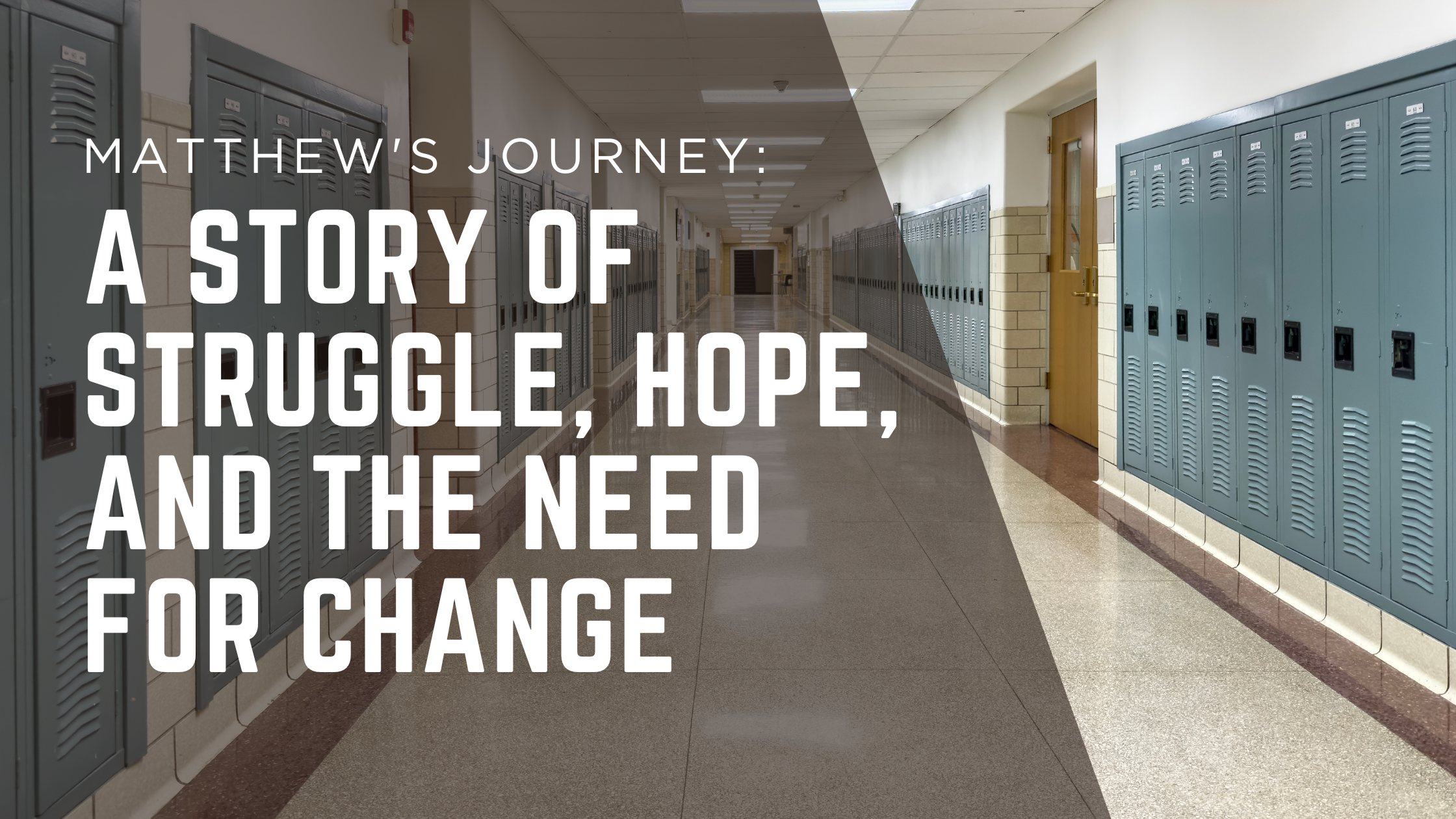Matthew’s journey is one that’s filled with pain, resilience, and an unwavering fight for a better life. This is the story of how one mother fought tirelessly for her son, against all odds, in a system that was ill-equipped to provide the specialized care he needed. It’s a story of the ongoing struggle faced by children like Matthew, and the urgent need for more spaces of healing, support, and hope.
Matthew’s Early Struggles and Resilience
Autumn and her husband welcomed Matthew into their home when he was just 8 years old, but his journey to safety had already been a painful one. Born to a mother who struggled with substance abuse and inflicted physical and emotional harm on him from the moment he entered the world, Matthew’s life had been nothing short of heartbreaking. By third grade, Matthew was already burdened with six mental and behavioral health diagnoses—each one a result of the trauma he had endured.
But even with all this pain, Matthew was still a bright, spirited boy. He had a love for Legos, a passion for drawing, and an infectious energy when playing with his friends. Every meal Autumn prepared was a small miracle for him, a symbol of love and stability he had never known. He treasured these moments, savoring not only the food but the feeling of being cared for—something he hadn’t experienced in his early years.
School Struggles: A System Ill-Equipped to Help
Despite his new stable home, Matthew’s past would never let him go. His trauma often emerged in violent outbursts, moments of raw emotion that no child should have to carry. Matthew was expelled from three public schools, and other schools refused to even take him in. When Autumn finally found a school willing to accept him, things didn’t get any easier. For Matthew’s safety and the safety of others, he was removed from the bus, and the school created a special “safe room” for him—a quiet space filled with pillows and stuffed animals where he could try to calm himself during emotional storms.
Autumn fought for Matthew. She turned to the county for support, even considering respite care. But when she toured the facility, she knew in her heart that it would do more harm than good. It wasn’t a place for a child like Matthew. It wasn’t the care he deserved.
The Growing Crisis and Need for Specialized Care
As the years passed, Autumn became Matthew’s fierce advocate, battling the system every step of the way. His middle school told her they couldn’t meet his needs, and the entire school district turned their back on him. Even nearby districts refused to accept him. It took all of Autumn’s strength, her unwavering love for her son, to get him the support he needed, working tirelessly with Ramsey County and the Department of Human Services just to keep Matthew in public school.
But at home, things were becoming more and more difficult. Matthew had grown taller than Autumn, and she began to feel an overwhelming fear for the safety of her family. Despite the weekly therapy, the social worker visits, and the family counseling, Matthew’s violent outbursts continued. No matter how much love and care surrounded him, he was still trapped in a cycle of trauma that made him—and those around him—feel unsafe.
When Matthew reached high school, Autumn came to a heartbreaking realization. The only way to help her son was to place him in a temporary residential program to help him stabilize. She searched far and wide, exploring every possible option, but in Minnesota, no safe, specialized residential care program existed for children like Matthew—children who had survived deep trauma and who needed more than just care; they needed an environment that could nurture them, heal them, and help them regain control of their lives.
Desperate for a solution, Autumn found a program in Florida that seemed promising. But within just a few months, she knew it wasn’t the right fit. The facility operated like a military camp, lacking the therapeutic, one-on-one support Matthew truly needed. Mathew’s wellbeing began to decline, and Autumn withdrew him from the program and brought him back home.
The Need for Change: A System That Fails
For 10 years, Autumn fought with everything she had for Matthew, desperately searching for the support he so urgently needed. But Minnesota’s system failed her son, lacking a safe place for children in the midst of a mental health crisis. It failed not just Matthew, but every child like him—children whose stories of trauma and mental health struggles often go unnoticed and ignored. In Minnesota, there are only a few beds that provide the 1:1 care in a home environment that Matthew required—a precious few. And that’s simply not enough for the thousands of children who need help to heal and rebuild their lives.
Matthew’s story is not an isolated one. There are countless children in Minnesota facing the same struggles, with nowhere to turn. They deserve more. They deserve to be cared for by trained, compassionate professionals in a safe, supportive environment.
The Solution: Mount Olivet Rolling Acres’ Youth Crisis Stabilization Homes
That’s where Mount Olivet Rolling Acres’ Youth Crisis Stabilization Homes come in. These homes offer something vital: a place of safety and support for youth ages 5-17 who are facing a mental health crisis. With round-the-clock care, these homes give children the chance to stabilize, heal, and find hope again. And just as importantly, they offer support to the families and caregivers who are often left to navigate this journey alone.
Matthew’s journey isn’t over, but with the right support, there is hope for a brighter future. And for every child like Matthew, there is a chance for healing—if we can create a system that truly cares.

Give to the Max 2025
November 1 – 20
Help MORA raise funds to open 2 NEW Youth Crisis Stabilization Homes in 2026.

